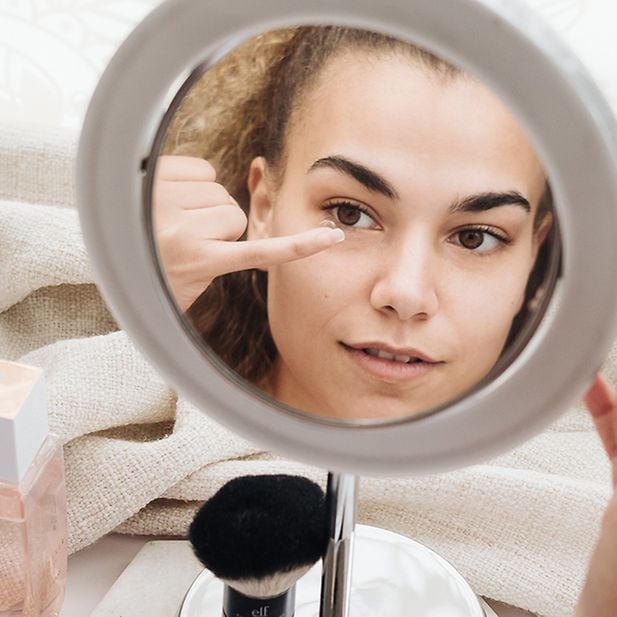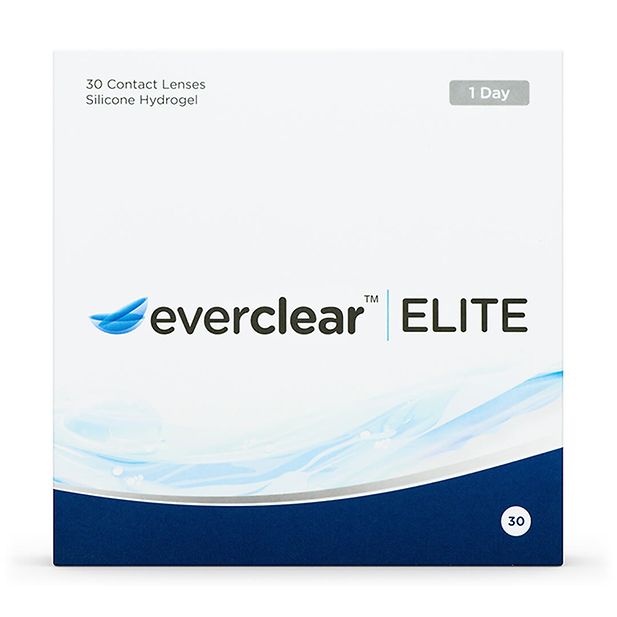Have you ever developed a chalazion and wondered if your contact lenses had something to do with it? Or, perhaps, a small lump has just appeared on your eyelid and you're unsure if you should take a break from your lenses altogether? Our in-house optometrists have assembled a useful guide for contact lens wearers, covering everything from what causes a chalazion, how to treat it and the best way to prevent it.
Black Friday sale 8% off
Contact lenses and chalazion

What is a chalazion?
A chalazion looks like a red bump or follicle, which slowly develops as a cyst, usually on the inside of the eyelid, towards the middle. Caused by a blockage of the meibomian glands, a chalazion generally isn't painful and if there's more than one, they're called chalazia. The larger the size of the chalazion, the more it can result in blurry vision and watery eyes, as it presses on the cornea. Chalazia are often confused with styes (hordeolum), another type of eye infection that appears as smaller pimple-like bumps on the upper lid, base of the eyelashes or lower lid or edge of the eyelid due to blocked glands of Zeis (different oil glands). A stye can be more painful and appears yellow at the centre, potentially bursting naturally after a few days. If a stye doesn't drain or heal properly, it can turn into a chalazion.
Chalazion causes
In your upper and lower eyelids, the meibomian glands produce oil that mixes with your tears to provide moisture and protect your eyeballs and surrounding areas. You may get a chalazion if this oil gets too thick or if the glands become blocked due to inflammation.
Eye problems like blepharitis, conjunctivitis and chalazia can only be linked to your lenses if you haven't been keeping up your eye care routine and ensuring that they're always clean. As well as dirty lenses, other risk factors include:
- Skin conditions like seborrheic dermatitis or acne rosacea
- Eyelid inflammation (blepharitis)
- A health condition, such as diabetes
- You've had a chalazion in the past

How to prevent a chalazion
Although there's no way to completely prevent a chalazion from developing, you can follow a few steps to reduce your chances of getting one:
- Wash your face in the evening before bed, making sure to remove any eye make-up. If your skin is sensitive and prone to irritations, consult a dermatologist about the best cleanser or soap to use around your eyes.
- Keep up your hand hygiene, especially when it comes to applying or removing your lenses. Dirty hands can transmit bacteria to your eyes, so it's essential to wash them for 20 seconds, with clean, warm water and dry them with a lint-free towel. If you're on the go, our nifty packs of Soap Sheets make disinfecting your hands super-easy - just mix one sheet with water and you're all set.
- Stick to your eye care routine to maintain optimum eye health. As well as ensuring your face and hands are spotless, it's also incredibly important to maintain your contact lens cleaning routine if you're a monthly or two-weekly wearer.
- Avoid sleeping with contact lenses, unless advised by your optician and store them in a good quality multi-purpose solution, only changing brands if advised by an expert.
- Solutions should never be used once they've expired, so make sure to check expiry dates.
- Never store or clean your contact lenses in water, or mix the solution with other liquids, as this reduces its effectiveness and can lead to infections.
- Wearers of daily contact lenses must always remove their lenses and throw them away at the end of the day, before replacing them with a new, fresh pair.

Switch to daily contact lenses
If you're prone to developing eye conditions, such as chalazia, choosing daily contact lenses, a more hygienic wearing pattern, is the answer. Different to reusable lenses, dailies are easier to keep clean and bacteria-free given that you dispose of them whenever you want. Additionally, they're thinner in design, making them more breathable and ideal for those with dry eyes.
Try daily contact lenses for FREE
Exclusive to Vision Direct, everclear ELITE contact lenses are highly hygienic, comfy, and convenient, with an ultra-hydrating formula. These daily lenses are ideal for avoiding bacterial infections because they're disposable, and should they get dirty or wet, you can easily replace them with a new pair. Plus, their UV filter makes them even safer and offers an extra layer of defence against harmful sun rays.
Chalazion treatment
Luckily, a chalazion will usually clear up within a few days or weeks, but if you're feeling discomfort you can try some home treatments like applying a warm compress or clean washcloth on the affected eyelid. Cleaning your eyelids with a gentle soap like baby shampoo or an over-the-counter eyelid scrub can speed up the healing process, as can massaging the area to open the gland. Alternatively, your doctor may prescribe topical eye drops or if you have chronic, recurrent chalazion, oral antibiotics.
Don't squeeze or pop a chalazion, as this can worsen the issue. In the case that the chalazion doesn't go away, just reach out to your eye doctor or ophthalmologist, as you may need a small surgery to remove it. These surgical operations aren't complex and are normally performed with a local anaesthetic.
